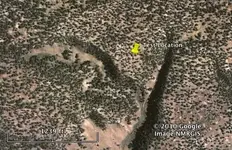Good morning my friends, one important point apparently not generally considered. "You do not run at night in Mt country, even with a full moon. that is an excellent way to commit suicide, or become seriously injured, which is the same thing in the end. It is even very difficult just cautiously walking. The Indians were handicapped the same way.
Sooo, perhaps many are looking too far away from the fort site??
As for traveling at night to avoid the Indians, hmm, they were pros at tracking, they had to be to survive from hunting and other war parties, etc. Some one traveling at night would be unable to take care in covering their movement sign properly, it would be a 'neon sign' in those days.
I rather suspect that the Indians knew just how many were in the party and so looked for any survivors, after all, you do not just attack an enemy until you know his strength. The Apache almost never attacked frontally, always from ambush. He was well aware of tribal man power attrition.
Side thingie, please don't believe that the Indians are still guarding it, or the LDM, they have modernized just as we have, and know the full value of Precious metals and Yankee dollars, witness the explosive growth of the various 'Indian Casinos'.
If they had it, or knew where it was, they would simply file on it today for complete potection..
Incidentally, Mexican piloncios / brown sugar cones are fairly pointed. They are generally cast in wooden forms and this form allows for easier removal. The same as for assay buttons.
Just curious.
Don Jose de La Mancha





 ?
?


